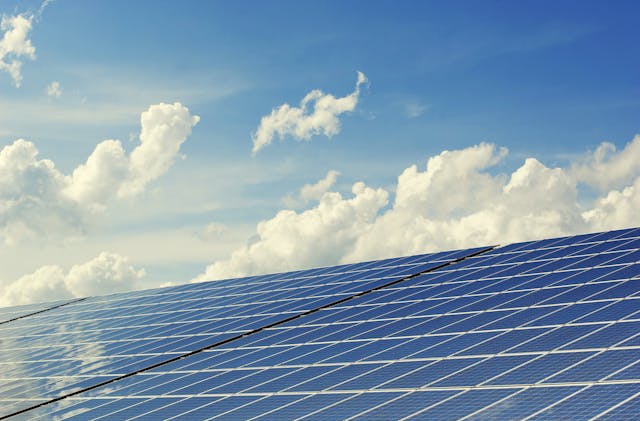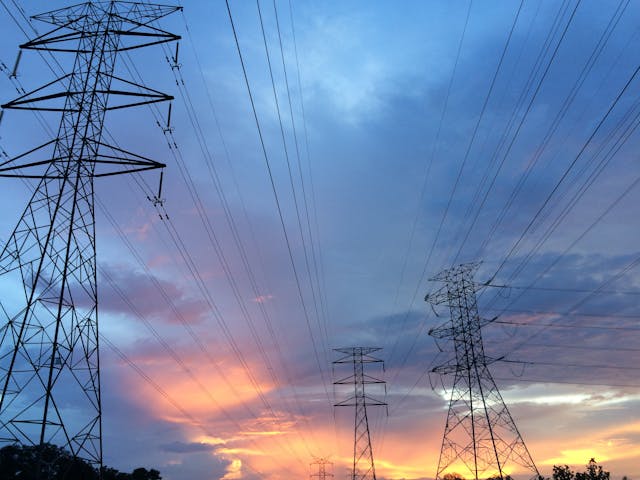As the world confronts the growing impact of climate change, the conversation around sustainable energy has taken center stage. Today, we’ll take a closer look at two major contenders in the renewable energy debate: wind energy and solar energy. While these sources hold tremendous potential, their intermittent nature presents challenges. That’s where Smart Grids and energy storage come into play, offering solutions to ensure a reliable, sustainable future.
Let’s explore the pros and cons of wind and solar energy, and how Smart Grids can bridge the gap.
Wind Energy: Harnessing the Power of Nature
Pros:
- Abundant and Renewable: Wind is an unlimited resource. As long as the wind blows, turbines can convert it into clean energy.
- Low Operational Costs: Once wind turbines are installed, they require minimal maintenance and offer low operational costs over time.
- No Emissions: Wind energy produces no harmful emissions, making it a key player in reducing global carbon footprints.
Cons:
- Intermittency: Wind energy is dependent on weather conditions. On calm days, energy production halts, creating an inconsistent power supply.
- Impact on Wildlife: Large-scale wind farms have been linked to wildlife disruption, especially for birds and bats, though newer turbine designs aim to mitigate these risks.
- Visual and Noise Concerns: Some communities resist wind farms due to concerns about noise and the aesthetic impact on landscapes.
Solar Energy: Powering Our Lives from the Sun
Pros:
- Infinite Resource: The sun is the most abundant energy source available. Solar technology is improving rapidly, making it more efficient in converting sunlight into power.
- Low Maintenance: Solar panels have long lifespans and require little upkeep, producing energy quietly with minimal environmental impact.
- Scalability and Versatility: Solar power can be harnessed on a small scale (think rooftop panels) or in large solar farms, making it suitable for diverse applications.
Cons:
- Intermittency and Storage: Like wind, solar energy is weather-dependent. Nighttime or cloudy days reduce energy production, creating the need for storage solutions.
- Land Use: Large-scale solar farms can take up significant space, raising concerns in densely populated or ecologically sensitive areas.
- Upfront Costs: While solar energy provides long-term savings, the initial installation can be expensive without incentives or subsidies.

The Role of Smart Grids and Energy Storage
Intermittency remains the biggest challenge for both wind and solar energy. But the development of Smart Grids and advanced energy storage systems could change the game.
- Smart Grids allow for better management of energy supply and demand. They use advanced technology to monitor and optimize energy distribution, making it possible to redirect energy where it’s needed most. These grids help prevent blackouts and enable more efficient use of renewable sources like wind and solar, smoothing out the fluctuations caused by intermittency.
- Energy Storage Solutions such as large-scale batteries are essential for capturing excess energy generated during peak production (sunny days or windy hours) and storing it for use during lulls. While storage technology is still developing, it’s becoming a vital component in the quest to make renewable energy reliable and consistent.
Why Smart Grids Matter:
- Efficiency: By using real-time data, Smart Grids ensure energy is distributed efficiently, reducing waste and optimizing renewable energy use.
- Grid Flexibility: Smart Grids can seamlessly integrate various energy sources—wind, solar, and even conventional sources—to ensure a stable and constant supply of power.
- Enhanced Resilience: As more extreme weather events occur due to climate change, Smart Grids will offer a more resilient infrastructure, able to respond to demand surges and energy production dips.
- Storage Integration: Smart Grids can work alongside energy storage systems, intelligently storing excess energy and discharging it when production dips, thereby smoothing out supply.
Which Path Forward?
With advancements in wind and solar technology, it’s clear that these renewable sources will form the backbone of a sustainable energy future. However, their inherent intermittency means they cannot operate independently without the support of Smart Grids and energy storage systems.
Here’s a potential roadmap:
- Wind and Solar as Primary Energy Sources: These renewable options are key to reducing carbon emissions and curbing the impact of climate change. As technology continues to improve, their efficiency will only grow.
- Smart Grids for Energy Management: By making energy distribution smarter and more adaptive, Smart Grids will mitigate the challenges posed by intermittent wind and solar power. Their ability to manage supply and demand in real time will make these energy sources more viable on a large scale.
- Energy Storage as a Vital Component: Advanced storage solutions, like large-scale batteries, will be critical to ensuring a reliable supply of energy even when weather conditions aren’t ideal for wind or solar generation.

Conclusion
The future of energy lies in a harmonious blend of wind, solar, and advanced grid technology. Wind and solar energy are already leading the way as the most promising renewable sources, but without Smart Grids and storage solutions, their full potential cannot be realized. By investing in these technologies, we can overcome the challenges of intermittency and build a future where clean, sustainable energy powers our homes, businesses, and cities.
Until next time, stay curious, stay green.
– GertieBlu








